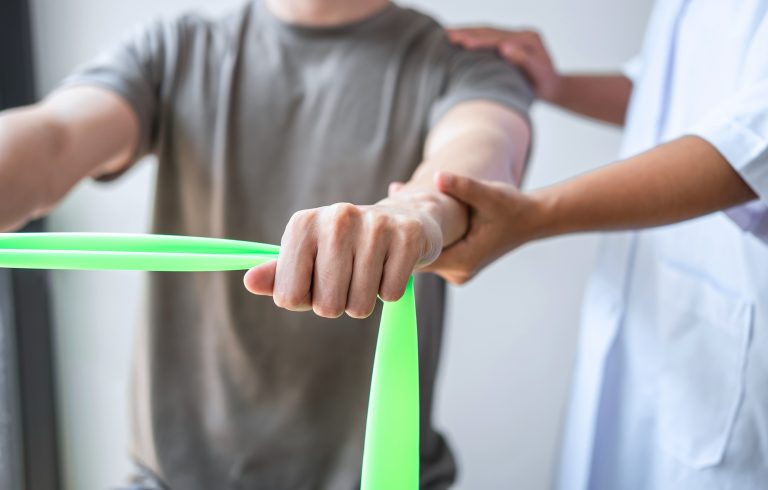When is Bone Spur Treatment Necessary?
When spinal bone spur treatment is necessary, the goal is usually to manage any uncomfortable symptoms as conservatively as possible. With the right combination of nonsurgical treatments, such as pain relievers, anti-inflammatory medications, hot and cold therapy, stretching, and low-impact exercise, many patients are able to get on with their lives without having to give any thought to spine surgery.
Since conservative bone spur treatment is so effective for many people, the assistance of an experienced and qualified physical therapist can be especially valuable if a bone spur becomes problematic. Among other things, a physical therapist will have the focused expertise necessary to design a customized physical therapy program to help a patient achieve his or her specific goals. Usually, pain relief and increased mobility rank at the very top of that list.
Physical Therapy for Bone Spurs
To accomplish a patient’s objectives, a physical therapy program for bone spur treatment may incorporate several types of exercises, including:
- Stretching and flexibility exercises to increase range of motion in the spinal joints and surrounding muscles
- Strengthening exercises that target the core and abdominal muscles that support spine, which can take some of the weight load off the spinal joints
- Specialized exercises to alleviate pressure on the spinal cord or a compressed nerve root
- Aerobic exercises to enhance cardiovascular fitness and increase tolerance for physical activity
Of course, if you’re in pain, the prospect of exercising might seem a bit daunting. But, it’s important not to feel intimidated. Research shows that, in general, the more exercise a patient can handle — as guided by a physical therapist — the quicker he or she can usually find relief.
In addition to exercise, a physical therapist might also recommend a combination of complementary bone spur treatment options, such as:
- Massage therapy to alleviate joint stiffness
- Postural improvement through simple changes in body positions while standing, walking, and sitting, which can relieve pressure on a compressed nerve root
- Special pain treatments, such as ice pack applications or electrical stimulation, for severe or persistent pain
If Physical Therapy Is Not Enough…
Whether you’ve tried physical therapy or another nonsurgical bone spur treatment, if you have not seen any improvement in your symptoms over the course of a few weeks or months, you might want to explore surgery. Before consenting to a traditional open spine procedure, you should consider all of your options, which may include the safer and effective alternatives performed by the surgeons at BEST Health System.
Surgical intervention may be necessary if conservative efforts are ineffective. Through the use of modern technology, surgeons are now able to complete these procedures without the need for large incisions. BEST Health System is the industry leader in minimally invasive care. Even compared to other minimally invasive surgical providers, BEST is setting the blueprint. Contact our team to schedule an appointment or learn more about our services. Put an end to your back pain now and for all.
